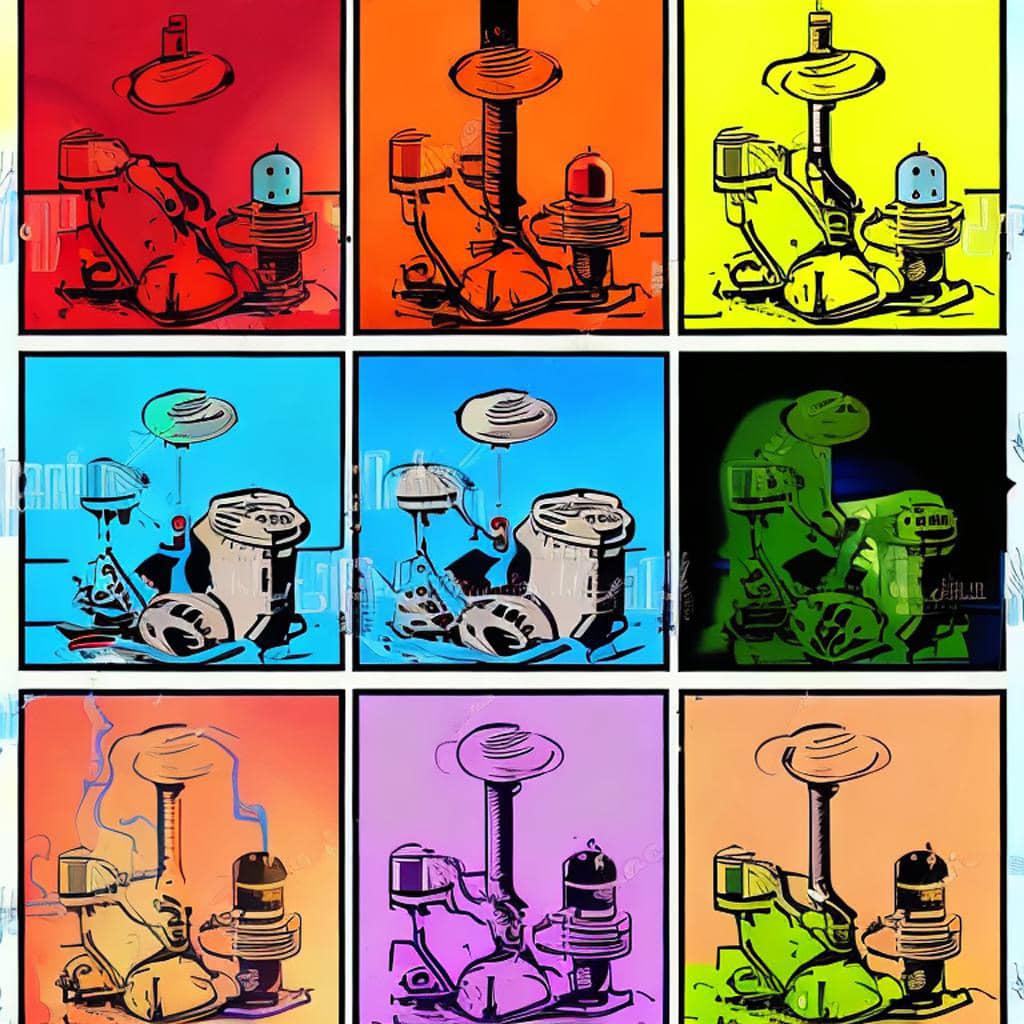Temperature fluctuations as an alternative source of energy
Temperature fluctuations can be used as an alternative source of energy through a process called thermoelectric energy conversion.
Thermoelectric energy conversion is a process that converts temperature differences directly into electrical energy using thermoelectric materials. These materials are able to generate an electric voltage when a temperature gradient is applied across them, with one side of the material being hotter and the other side being cooler.
The thermoelectric effect is based on the Seebeck effect, discovered by Thomas Johann Seebeck in 1821. The Seebeck effect is the creation of an electromotive force (EMF) in a conductor when there is a temperature gradient along its length.
Thermoelectric generators (TEGs) are devices that use the thermoelectric effect to generate electrical energy from temperature differences. TEGs consist of thermoelectric modules that contain thermoelectric materials sandwiched between two conductive plates.
When a temperature gradient is applied across the thermoelectric module, a voltage is generated due to the Seebeck effect. This voltage can be used to power electronic devices or stored in a battery for later use.
Advantages of thermoelectric energy conversion
No moving parts: Thermoelectric generators have no moving parts, making them low maintenance and reliable.
Scalability: Thermoelectric generators can be made in different sizes and configurations, making them suitable for a wide range of applications.
Efficiency: Thermoelectric generators have high efficiency at low temperature differentials, making them suitable for waste heat recovery and other low-grade heat sources.
Durability: Thermoelectric generators have a long lifespan and can withstand harsh environmental conditions.
No emissions: Thermoelectric generators produce no emissions, making them a clean and environmentally friendly energy source.
While thermoelectric energy conversion has several advantages, there are also some limitations to consider. The efficiency of thermoelectric generators is still relatively low, and the cost of thermoelectric materials can be high. However, research is ongoing to improve the efficiency and reduce the cost of thermoelectric materials, making them a more viable alternative source of energy in the future.
Thermoelectric energy conversion is a process that can convert temperature differences directly into electrical energy using thermoelectric materials. Thermoelectric generators have several advantages, including low maintenance, scalability, high efficiency at low temperature differentials, durability, and no emissions. While there are still some limitations to consider, thermoelectric energy conversion is a promising alternative source of energy that can be used to generate electricity from waste heat, geothermal energy, or other temperature differences.
Thermoelectric Energy Conversion: An Overview
Thermoelectric energy conversion is a process that converts temperature differences directly into electrical energy using thermoelectric materials. This process is based on the Seebeck effect, which was discovered by Thomas Johann Seebeck in 1821. The Seebeck effect is the creation of an electromotive force (EMF) in a conductor when there is a temperature gradient along its length.
The thermoelectric effect is a quantum mechanical phenomenon, which occurs in certain materials known as thermoelectric materials. These materials are able to generate an electric voltage when a temperature gradient is applied across them, with one side of the material being hotter and the other side being cooler. The voltage generated is proportional to the temperature gradient and the properties of the material.
Thermoelectric generators (TEGs) are devices that use the thermoelectric effect to generate electrical energy from temperature differences. TEGs consist of thermoelectric modules that contain thermoelectric materials sandwiched between two conductive plates. When a temperature gradient is applied across the thermoelectric module, a voltage is generated due to the Seebeck effect. This voltage can be used to power electronic devices or stored in a battery for later use.
The efficiency of thermoelectric generators depends on several factors, such as the properties of the thermoelectric materials, the temperature difference across the device, and the design of the module. The efficiency of TEGs is often measured by their power conversion efficiency (PCE), which is the ratio of the electrical power output to the thermal power input. The PCE of TEGs is typically in the range of 5-8% for small temperature differences, but can reach up to 15% for larger temperature differences.
Advantages of thermoelectric energy conversion
No moving parts
Thermoelectric generators have no moving parts, making them low maintenance and reliable.
Scalability
Thermoelectric generators can be made in different sizes and configurations, making them suitable for a wide range of applications.
Efficiency
Thermoelectric generators have high efficiency at low temperature differentials, making them suitable for waste heat recovery and other low-grade heat sources.
Durability
Thermoelectric generators have a long lifespan and can withstand harsh environmental conditions.
No emissions
Thermoelectric generators produce no emissions, making them a clean and environmentally friendly energy source.
Applications of thermoelectric energy conversion
Waste heat recovery
Thermoelectric generators can be used to recover waste heat from industrial processes, automobiles, and other sources of low-grade heat.
Renewable energy
Thermoelectric generators can be used to generate electricity from geothermal energy, solar energy, and other renewable energy sources.
Space exploration
Thermoelectric generators have been used in space exploration missions, such as the Mars rover, to generate electricity from the heat of radioactive isotopes.
Wearable electronics
Thermoelectric generators can be integrated into wearable electronics to generate electricity from body heat.
While thermoelectric energy conversion has several advantages, there are also some limitations to consider. The efficiency of thermoelectric generators is still relatively low, and the cost of thermoelectric materials can be high. However, research is ongoing to improve the efficiency and reduce the cost of thermoelectric materials, making them a more viable alternative source of energy in the future.
Thermoelectric energy conversion is a promising technology that can convert temperature differences directly into electrical energy using thermoelectric materials. Thermoelectric generators have several advantages, including low maintenance, scalability, high efficiency at low temperature differentials, durability, and no emissions. While there are still some limitations to consider,

Thank you for questions, shares and comments!
Share your thoughts or questions in the comments below!
Text with help of openAI’s ChatGPT Laguage Models & Fleeky – Images with help of Picsart & MIB





